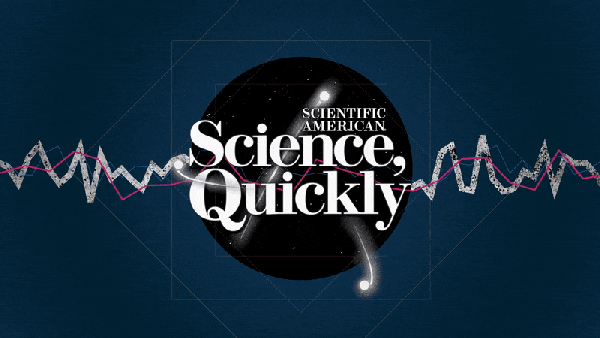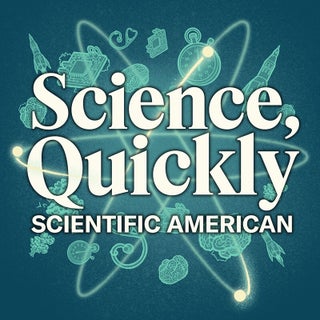[CLIP: Music]
Timmy Broderick: So I’m sitting inside this stone clock tower in the small town of Castellaro Lagusello in Italy. It’s pretty old, like 800 years old. I had found a nook in this tower where I could sit and record this ethereal music coming from the speaker in front of me. And through the slit of a window behind me, I could watch Italians mill about below.
Jason Drakeford: So Timmy, why are you being a recluse in this tower instead of talking with people on the ground?
Broderick: [Laughs.] Well, it’s a fair question. I was gathering tape to be played on this podcast, but it was also my last day at the Universe in All Senses, it’s an astronomy festival. And I was pooped. For three days, I ran around this tiny, picturesque town capturing what was likely the first multisensory astronomy festival ever.
[CLIP: Music]
Broderick: Oh, does this sound familiar?
Drakeford: Yes! That’s Matt Russo’s TRAPPIST-1 sonification that we listened to in the first episode!
Broderick: Yeah! The festival organizers rigged up the clock tower to play a bunch of sonifications on a loop, and then at night, they’d project visualizations of these compositions onto the face of the clock tower.
[CLIP: Show theme music]
Drakeford: You are listening to Scientific American’s Science, Quickly. I’m Jason Drakeford.
Broderick: And I’m Timmy Broderick. In the prior episode of this three-part Fascination, we dove into the origins of turning space data into sound. In this final episode, we’re traveling to Italy to see whether astronomical sonifications can help people with disabilities better understand the awe and wonder of the cosmos.
Broderick [on tape]: Okay, so I’m walking around. Four thousand people at once is a lot…
Drakeford: Okay so how did you even hear about this festival?
Broderick: In January I wrote a story about this burgeoning movement in astronomy. One of my sources for that story was Anita Zanella. She’s an Italian astronomer who grew up playing with her relatives on the stone streets of Castellaro Lagusello. She told me about the festival.
Anita Zanella: Castellaro has a lot of historical buildings. The villa and the lake are typical ones. The other important point for this little village is the tower, which is really the key part, the heart, of the village.
Broderick: Castellaro has been holding an astronomy festival for a couple years now. But this is the first time it has really been multisensory. Every workshop, every talk, every event—all of them were available in at least two senses.
Zanella: Inclusion is the main focus this year. So being able to share the knowledge and the beauty of astronomy and the beauty of the universe with whoever, irrespective of disability and sensory limitations.
Broderick: They also had these giant QR code-like signs set up around the festival to help blind people navigate and understand a workshop or exhibit.
Drakeford: Uhuh.
Broderick: It was pretty wild. My phone picked up the code from like 10 feet away!
Drakeford: Woah, this is so cool!
[CLIP: Festival sound]
Broderick: Yeah. The highlight of the first evening was the keynote panel with Anita and two visually impaired astronomers, Nic Bonne and Enrique Pérez-Montero. You might remember Enrique from our last episode. The three of them discussed how to build a “multi-sensory discovery of the sky above us.”
[CLIP: Festival sound]
Broderick: After the discussion, I talked with Claudia Beschi. She’s 25, hails from nearby Mantova, wants to be a translator and just completed graduate school. She found the discussion fascinating. She’s also been blind since birth.
[CLIP: “The Bullet Cluster” by Matt Russo]
Claudia Beschi: I didn’t think it was possible to translate galaxies into sounds.... I felt like nature was talking to me.
I believe that nature has its own sounds. And listening to that sound, it was as if that galaxy was telling something to me. Like this galaxy was describing itself to me.
Drakeford: Woah. The galaxy was speaking to her. This is wild!
Broderick: Yeah, I was actually really moved by that conversation. It stuck with me throughout the festival.
And so the next day was the first, like, full day. There was a lot going on. We had a bunch of workshops happening. We had a radio wave scavenger hunt, we had comet smelling, there was crafting galaxies out of felt and other fabrics, and also last but definitely not least, banging pots and pans to represent stellar energies.
[CLIP: Pots and pans banging]
All of the workshops were staffed by local kids who could teach the attendees and especially the young kids. Elisa Zaltieri goes to high school in Mantova, and she ran the pots and pans station.
Zaltieri: It's an activity about how stars are actually different. We make child play pots actually.
Broderick (tape): So what are you gonna have these kids do?
Zaltieri: We have to make them recognize how stars are different and then we have to make them play, like, if they were stars.
We were trying to explain to them that [for] the biggest star, play the hardest. And the smallest, play lower, actually, because they have less energy.
Broderick (tape): So if you play really loudly, you'll have more energy; if you play really softly, you’ll have less energy?
Zaltieri: Yep!
[CLIP: Pots and pans banging]
Broderick: While the festival was ostensibly for kids, there were many workshops and events for adults.
Mattia Grella: I’m Mattia, 33, and I’m from Verona, quite close by.
Broderick: Mattia came to the festival for a couple of reasons. He knows one of the organizers, but he is also passionate about astronomy. He’s a hardcore Trekkie, as well. I met him at one of the workshops. He was creating a kind of patch made from different fabric textures. It was supposed to represent the different parts of a galaxy.
Grella: It’s smooth and kind of wavy, soft but not really smooth, kind of like the music we listened to before. It was a piece played on the piano. It was a soft piece, but played with the piano, it also had kind of a certain rhythm to it. So these little waves, at least to me, they represent this softness but also this movement.
Broderick: Mattia has been visually impaired since birth. His version of space is definitely not the inky, black expanse that you or I perceive it as.
Grella: I know the stars are classified like yellow dwarfs, red giants. And in my head, I imagined them quite with vivid colors, but I have no idea if they’re like basically white with a slight shade of yellow, red, or if they’re as vivid as I imagine them.
[CLIP: “SgrA Chandra” by Matt Russo]
Drakeford: So what did you think? Was the festival successful?
Broderick: To be honest, I’m not sure. It was definitely fun! Like, everyone I saw was having a great time and really engaged with astronomy. But I didn’t really see many people using those giant QR codes. I know that there was bus trouble that kept many local blind and partially sighted people from coming to Castellaro.
Drakeford: Were there a lot of visually impaired people there?
[CLIP: “The Galactic Center” by Matt Russo]
Broderick: I don’t know how many of the 4,000 attendees were blind or visually impaired. Neither do the festival organizers. That’s just unknowable. What I do know is that for the blind people I talked with — for Claudia, for Mattia — the festival and sonifications were really helpful. Claudia was there for one night, but she was thrilled by what she heard.
Beschi: I don’t know if I will see the world in a different way in the future, but I’m sure that this experience, in a way, taught something positive to me. Because I love nature. I think that nature speaks to us in every way possible. And these translations into sound and into tactile modes is a really good way to get in touch with nature, especially for us because we can’t, we can’t see how nature is really made of.
[CLIP: Outro music]
Broderick: Science, Quickly is produced by Jeff DelViscio, Tulika Bose, Kelso Harper and Carin Leong. Our theme music was composed by Dominic Smith. Matt Russo provided the sonifications you heard in this episode.
Drakeford: Don’t forget to subscribe to Science, Quickly wherever you get your podcasts. For more in-depth science news and features, go to ScientificAmerican.com. And if you liked the show, give us a rating or review.
Broderick: For Scientific American’s Science, Quickly, I’m Timmy Broderick.
Drakeford: And I’m Jason Drakeford. See you next time!

